It has long been our plan to go to my paternal grandmother’s hometown in Bicol. My dad was seven years old when he last visited, and it took more than five decades until his return. Lots of things have changed and he could not recognize those that used to be familiar. We took a plane via Cebu Pacific Air and were surprised that travel time was less than an hour from Manila (whereas a bus ride takes more than 9-12 hours), even less than my driving time to work. 😉 Bus time schedule is posted here.
We spent two days exploring tourist attractions in Legazpi and a day in Ligao, my Amah’s hometown, where we went to houses of some relatives and family friends who were very close to our ancestors. They told us stories while reminiscing the past, all of which were heartfelt and heartwarming. In this post, I’m sharing the 10 best tourist spots we visited in Albay (Bicol Region).
10 Tourist Spots We Visited in Albay (Bicol Region)
1. Cagsawa Ruins
From our hotel, it took only about 10 minutes for us to reach the Cagsawa Ruins by jeep. The Cagsawa Ruins are the remains of a 17th century church built by the Franciscans. The reason why this “church” is so amazing is that in February 1, 1814, Mt. Mayon began its most violent and deadly eruption in recorded history. The church, along with most of the town of Cagsawa, was unfortunately destroyed by lahars and pyroclastic flows, killing thousands of inhabitants.
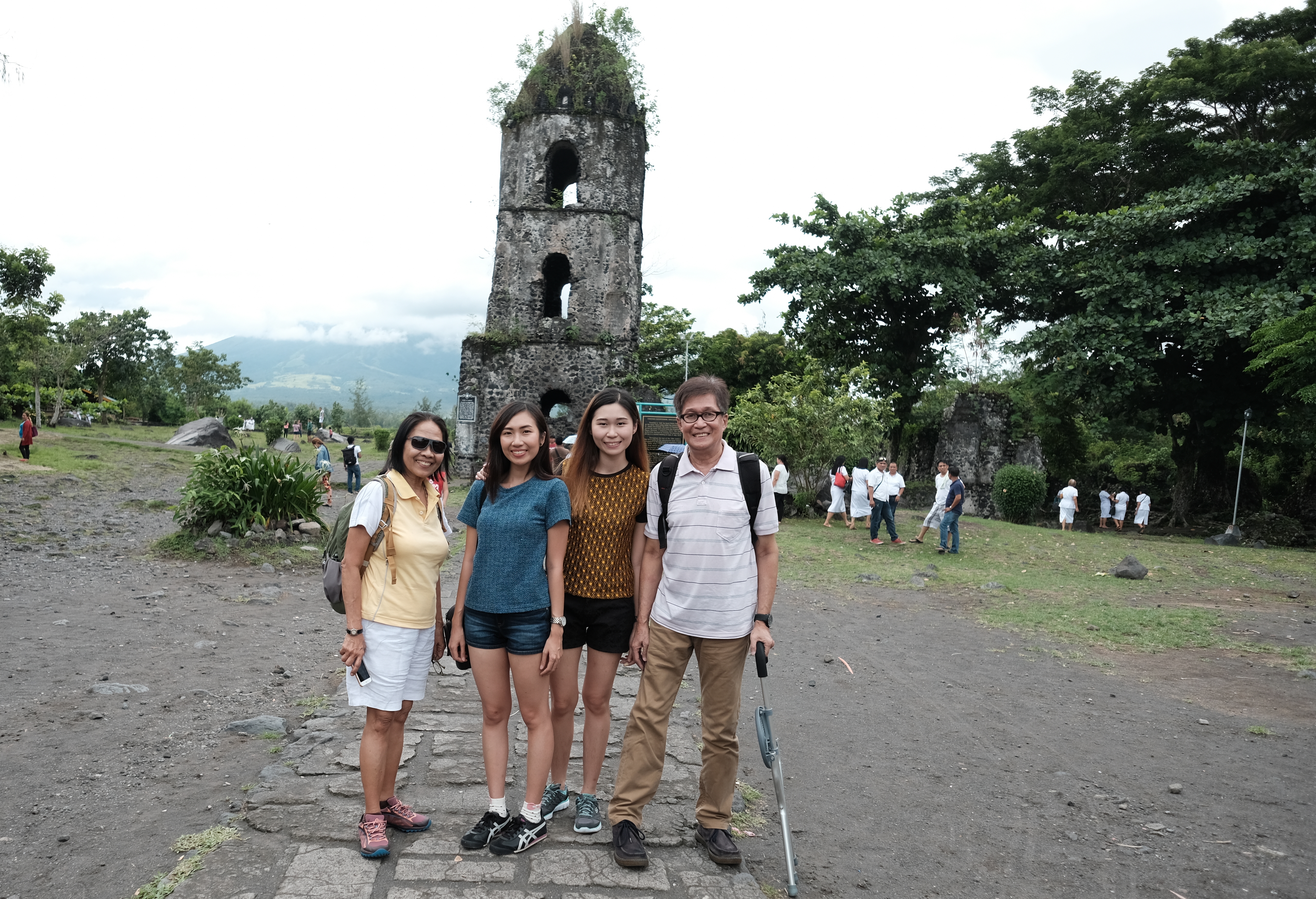
The remains of Cagsawa Church was buried by the eruption, and only the belfry (bell tower) remained visible since then. It’s a grim reminder of the devastating catastrophe that occurred. For more than two centuries, the church ruins have withstood the test of time. In 2015, the site was declared a national cultural treasure, the Philippines’ highest designation for a cultural property.
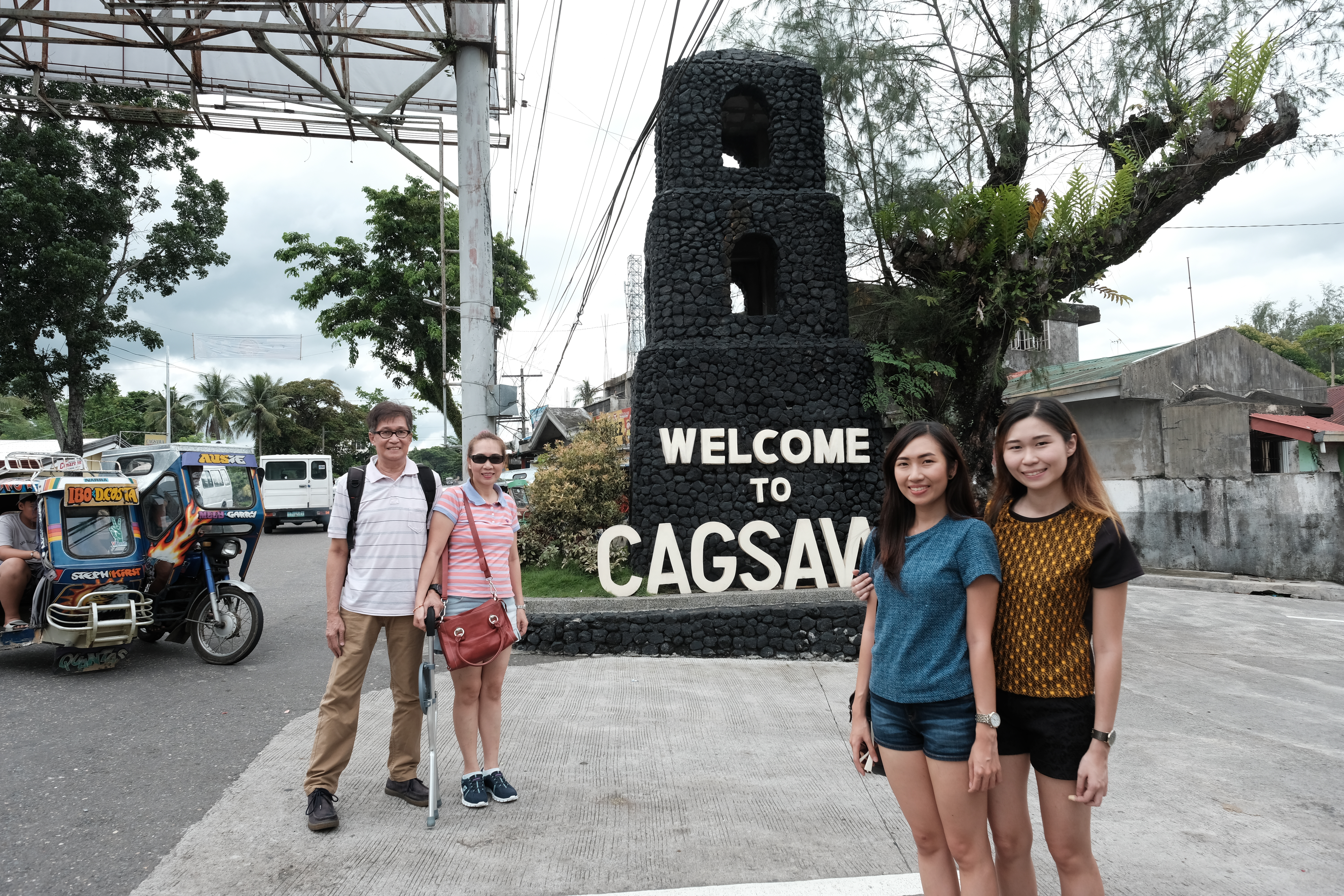

Here, we saw Mayon Volcano (covered by clouds though) that has graced thousands of postcards and souvenirs over the years. It’s definitely a great location where tourists can use a selfie stick and capture a memory to share on Facebook or Instagram. We shopped for some souvenirs from shops selling a colorful assortment of native products such as handbags, mats, shirts and handicraft made from indigenous materials like abaca. We also tried chili pili ice cream which tasted creamy and hot.
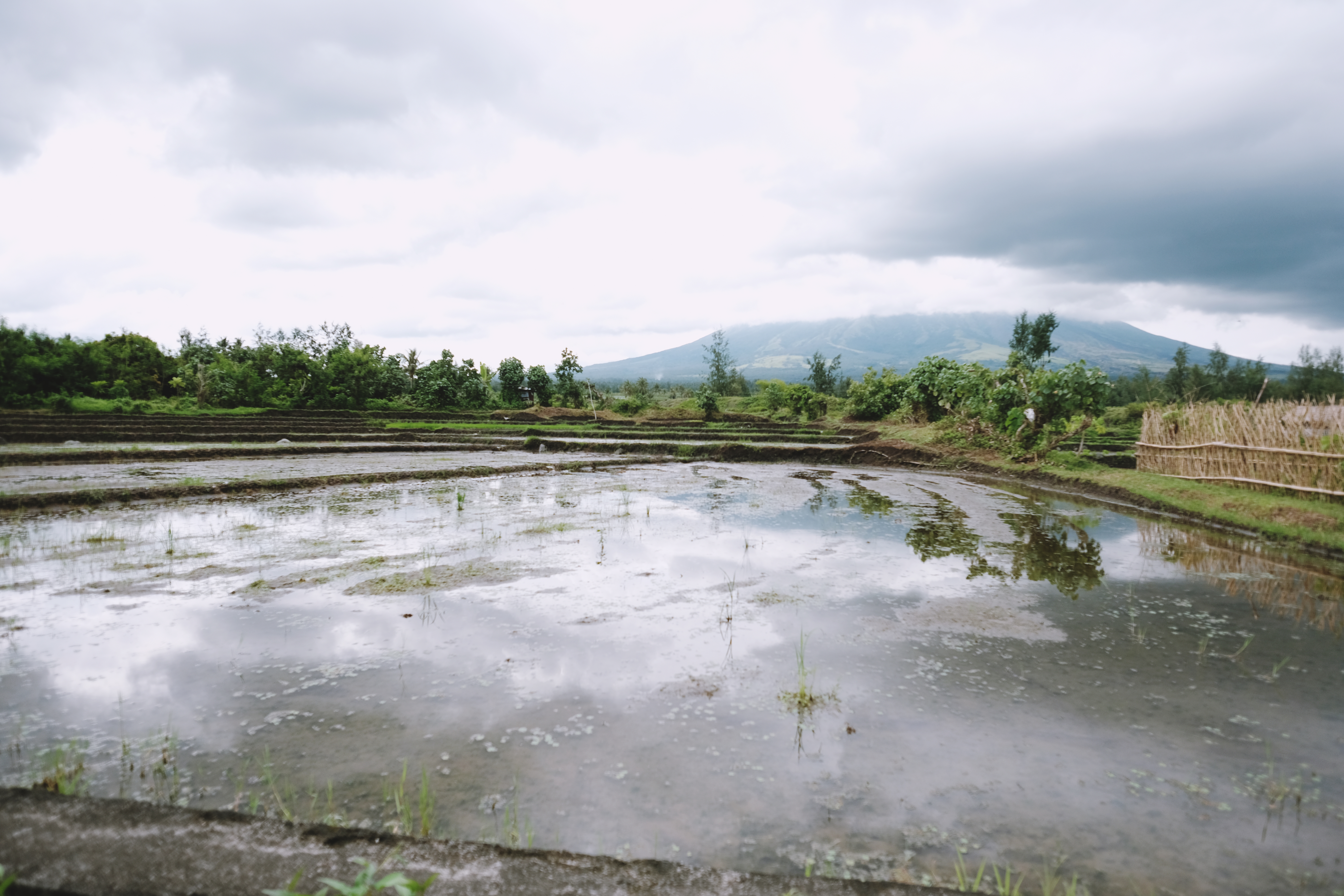

2. Ligñon Hill Nature Park
If you want to see a panoramic 360-degree view of Legazpi City, Daraga, Albay Gulf and the Mayon Volcano awaiting at the viewdeck, this is the best place to go. Ligñon Hill (pronounced as /li-NYON/) is one of Legazpi’s most famous landmarks. For years, it’s known only for the PHIVOLCS observatory located in its flanks and an old lighthouse on its summit.

During the times of the volcano’s eruption and heavy rains, this hill blocked the flow of lava and lahar, protecting the city from unimaginable destruction. Today, it has become one of the city’s prime destinations for sightseers, adventurers and even fitness buffs. It has turned into a nature park that offers sights and activities for all types of visitors.

The way to ascend Ligñon Hill by foot is very steep. We met two joggers who offered us a free ride to the top. We rode their car and had the opportunity to see the spectacular sight at the peak. We also went to the Japanese Tunnel, an arms cache used by the Japanese forces during WWII. This 50-foot tunnel gives visitors a chance to act like soldiers. It’s super dark inside!

3. Legazpi Boulevard
The two joggers we met in Ligñon Hill drove us next to Legazpi Boulevard, and we thanked them a lot for the free ride and free tour. We were supposed to hire a taxi to tour us around, but cost was too expensive (Php 3500 for 8 hours) so we backed out. We were so lucky to have encountered people who became our instant tour guides. 🙂 As a token of appreciation, we invited them to have dinner with us at Small Talk Cafe, our treat.
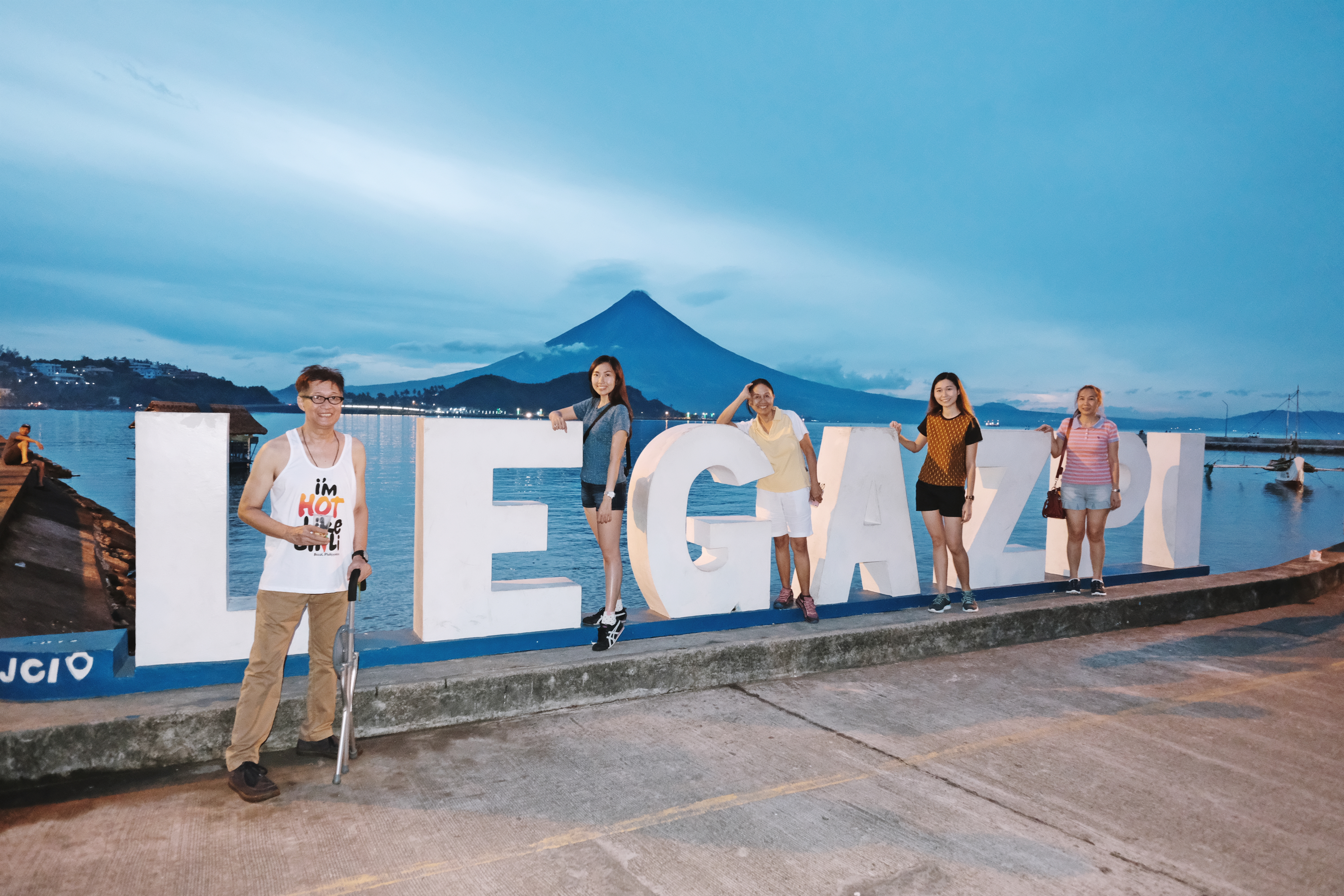
The Legazpi Boulevard is a coastal road network extending from the city’s central business district and port area to the southern barangays. It’s like Roxas Boulevard in Manila where you can stroll by the seashore, but what’s notably different is that here, you’ll see the Mayon Volcano and the Kapuntukan hill to the north, the Albay Gulf and its islands to the east, and the mountains of Sorsogon to the south. It’s a must-visit destination when in Legazpi.


4. Mayon Volcano
The Mayon Volcano, also known as Mount Mayon, is the most iconic landmark of Albay. It’s an active volcano that arguably has one of the most perfectly shaped cone and one of the most beautiful in the world. According to history, the longest uninterrupted eruption of Mayon Volcano occurred on June 23, 1897. The eruption lasted for seven days of raining fire. The village of Bacacay was buried 15 meters beneath the lava and killed hundreds of people in nearby villages.
ATVs (all terrain vehicles) are available for rent to further explore Mayon Volcano lava front. There are also people who dare to climb (usually takes four days to complete). The best recommended time of the year to climb Mount Mayon is from March to May.
5. Kawa-Kawa Hill
Kawa-Kawa Hill is a popular pilgrimage site in Ligao, Albay. It’s an uphill devotional tour where larger-than-life statues stand representing significant events that took place before and after Christ’s arrest, persecution, and crucifixion. We stopped by in each of the 14 Stations of the Cross and took photos while under the scorching heat of the sun. It was a painstaking but worthwhile experience.
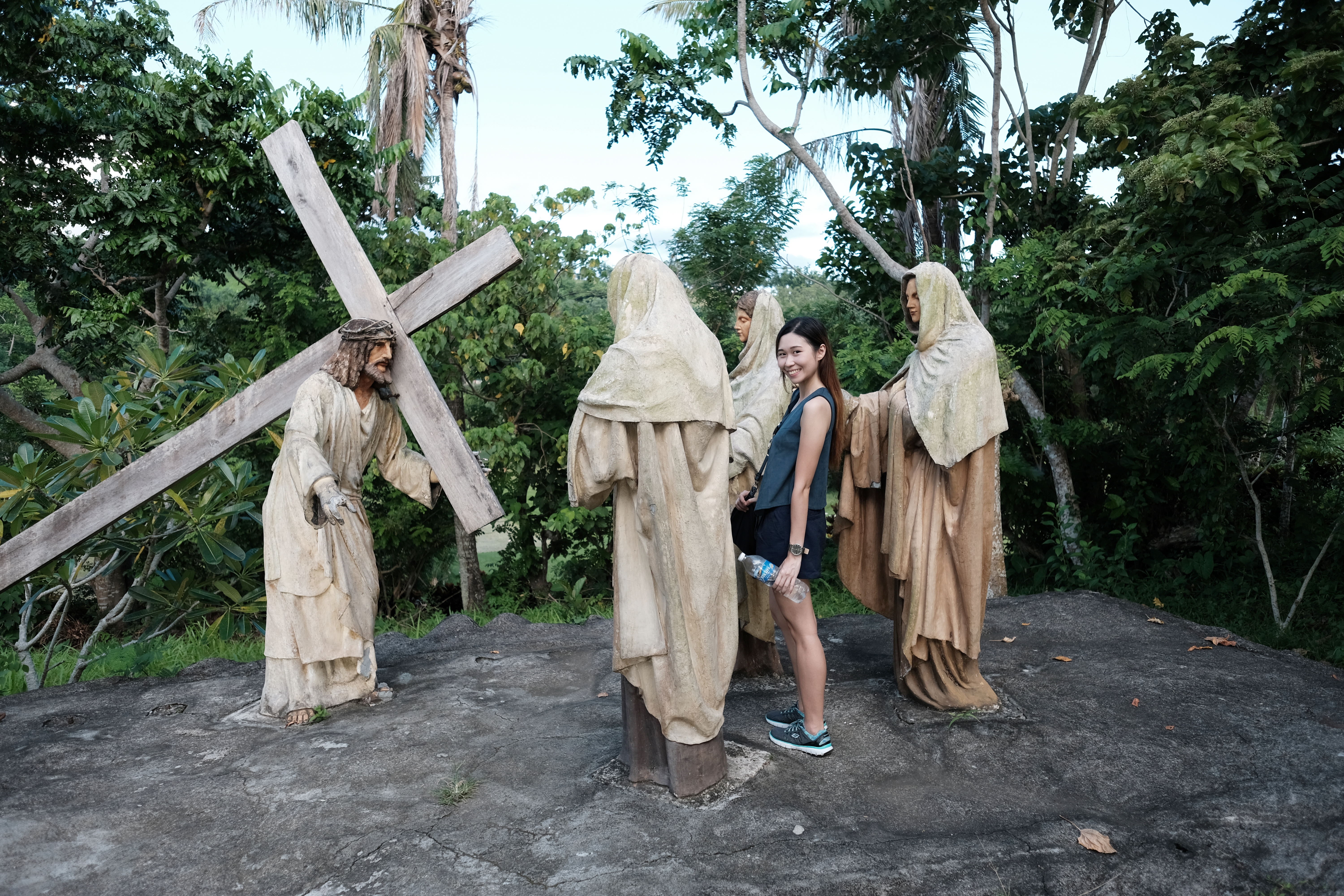
The nanny who took care of me when I was a baby went with us (she’s from Ligao City), and we did a lot of chatting while walking through the trail. We did sweat a lot and felt relieved when we finally reached the summit. My comical sister hence joked that instead of “Kawa-Kawa Hill,” it should be renamed as “Kaawa-awa” (meaning pitiful)—describing tired people hiking up. 🙂

The skyline looked marvelous! We clearly saw how the hill is shaped like a wok or giant cauldron. Wok is “kawa” in Filipino language. It’s interesting to know that Kawa-Kawa Hill is a hill without a top and it’s a hill with a crater covered with a luscious green grass and landscape.
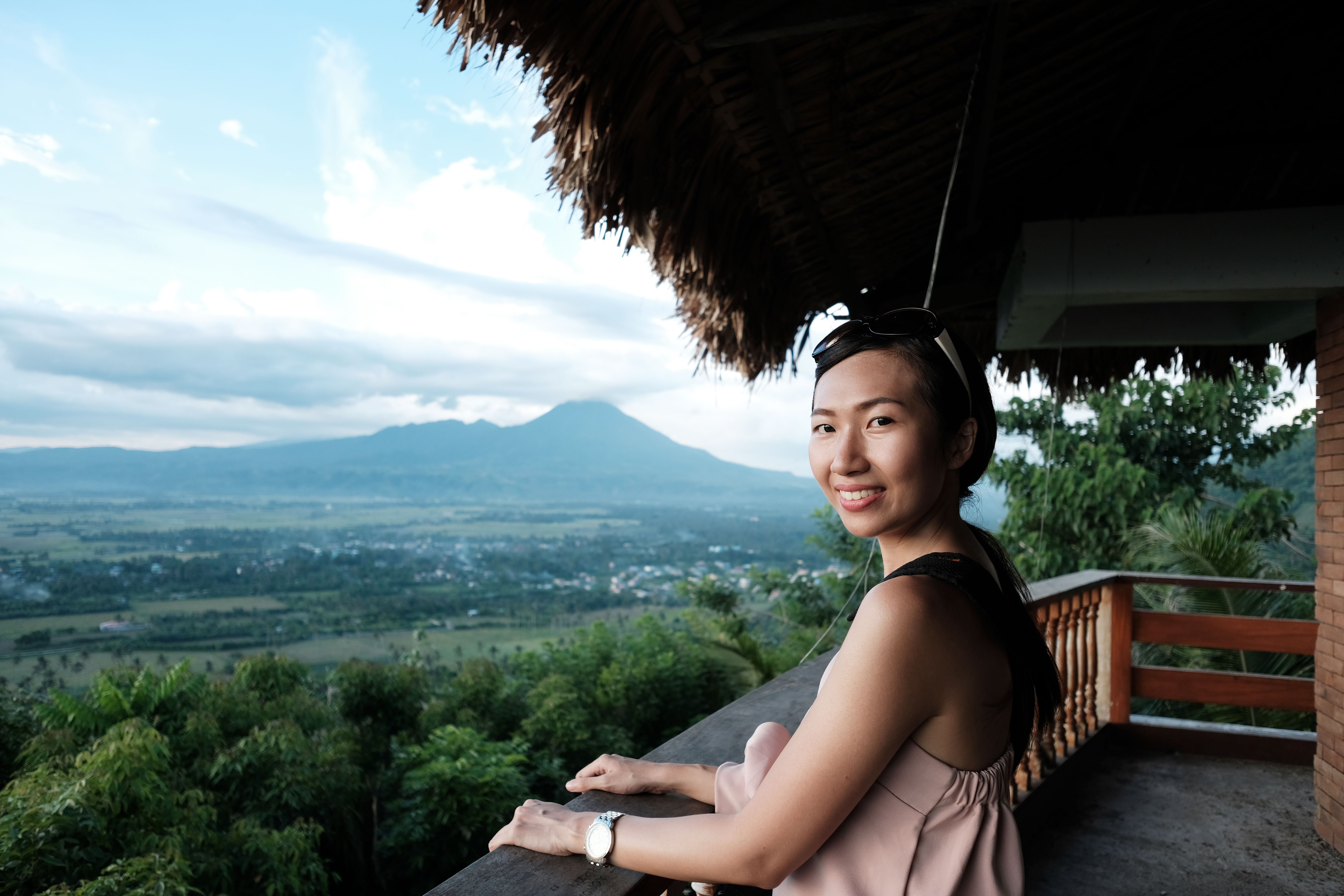
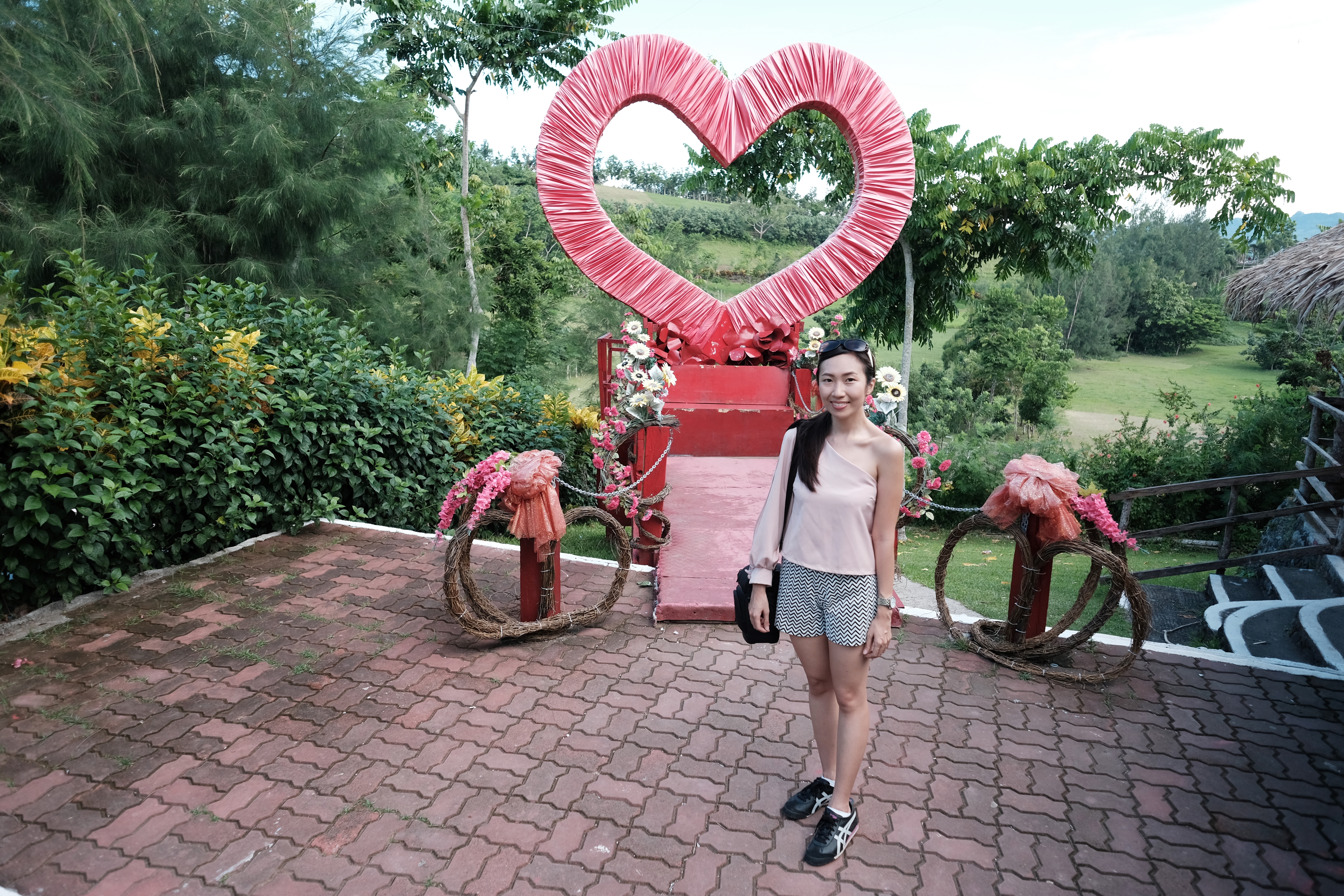
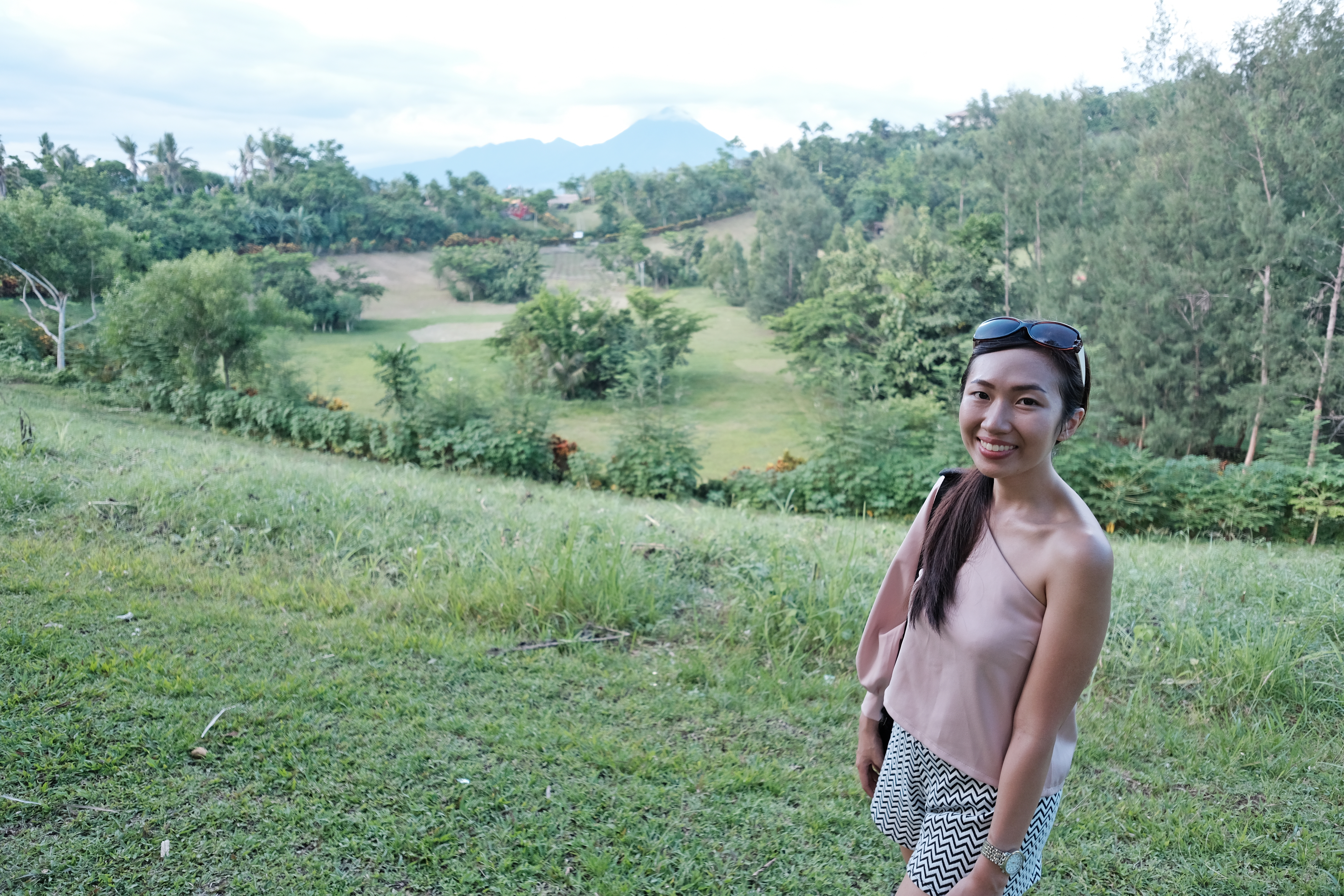
6. Divine Mercy Shrine and Carmelite Monastery
Just before we proceeded to the top of Kawa-Kawa Hill, we passed by Divine Mercy Shrine and Carmelite Monastery in Ligao. It’s a church situated at the top of the hill. People who donated to the church have justify footprints on the stairs. Beside the church is a life-size Last Supper sculpture, where we took several photos and stayed pit for a while to gaze at the art.
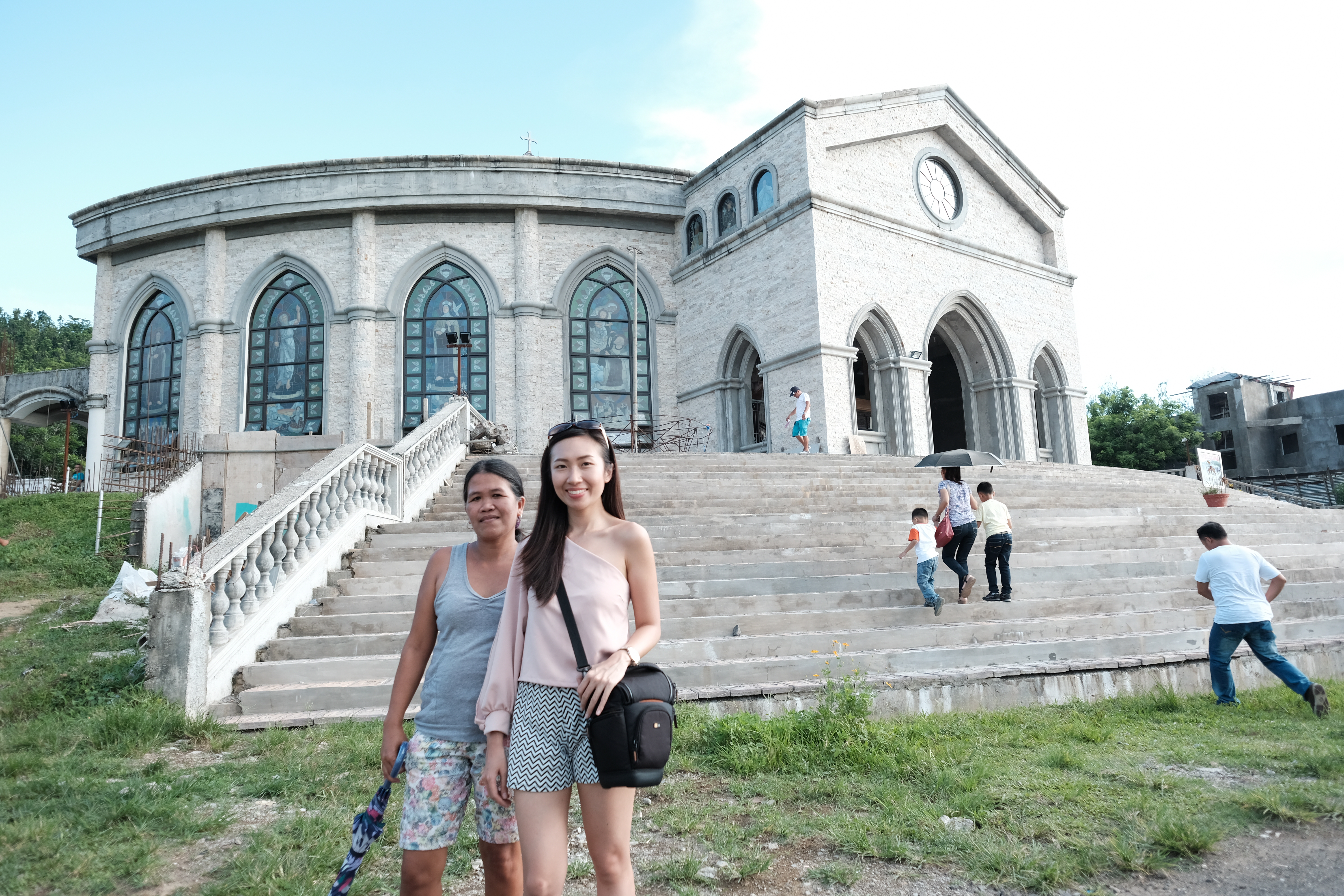
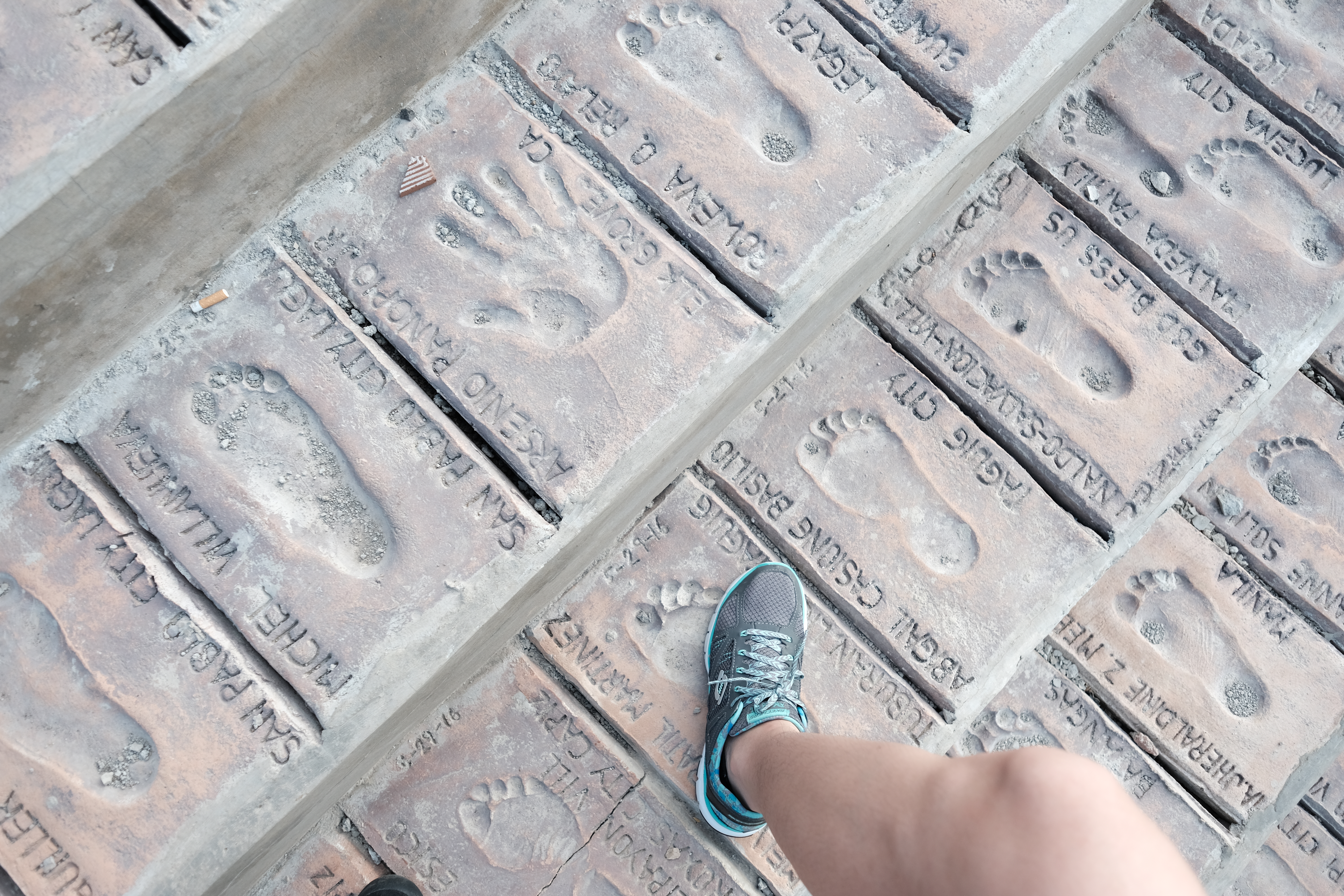
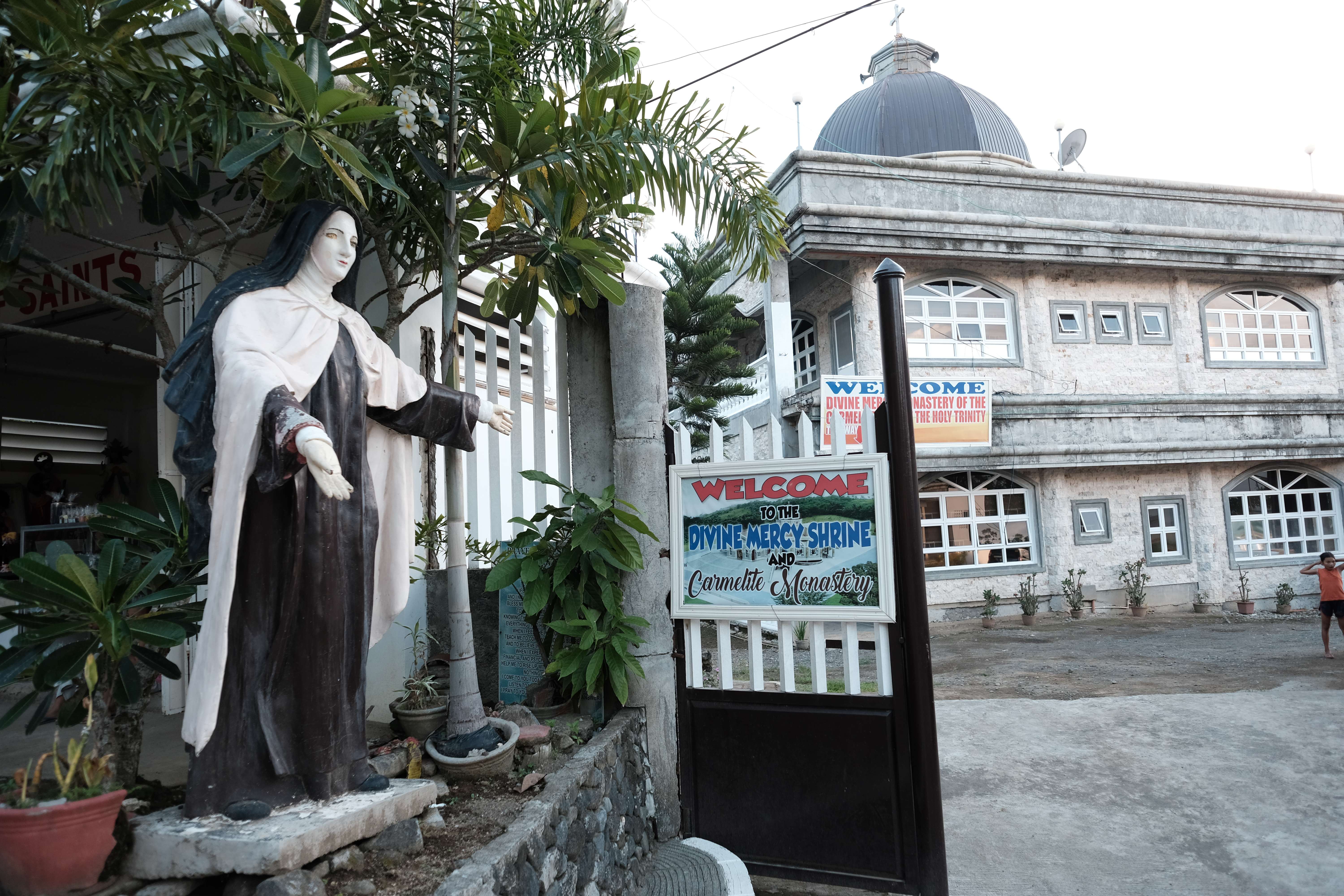

7. Daraga Church
Nuestra Señora de la Porteria Parish Church, commonly known as Daraga Church, is a Roman Catholic Church in the municipality of Daraga, Albay, Philippines under the jurisdiction of the Roman Catholic Diocese of Legazpi. It’s situated on top of a hill above the bustling town. Now a historical landmark, Daraga Church is a testament to the unwavering faith and resilience of the Bicolano.
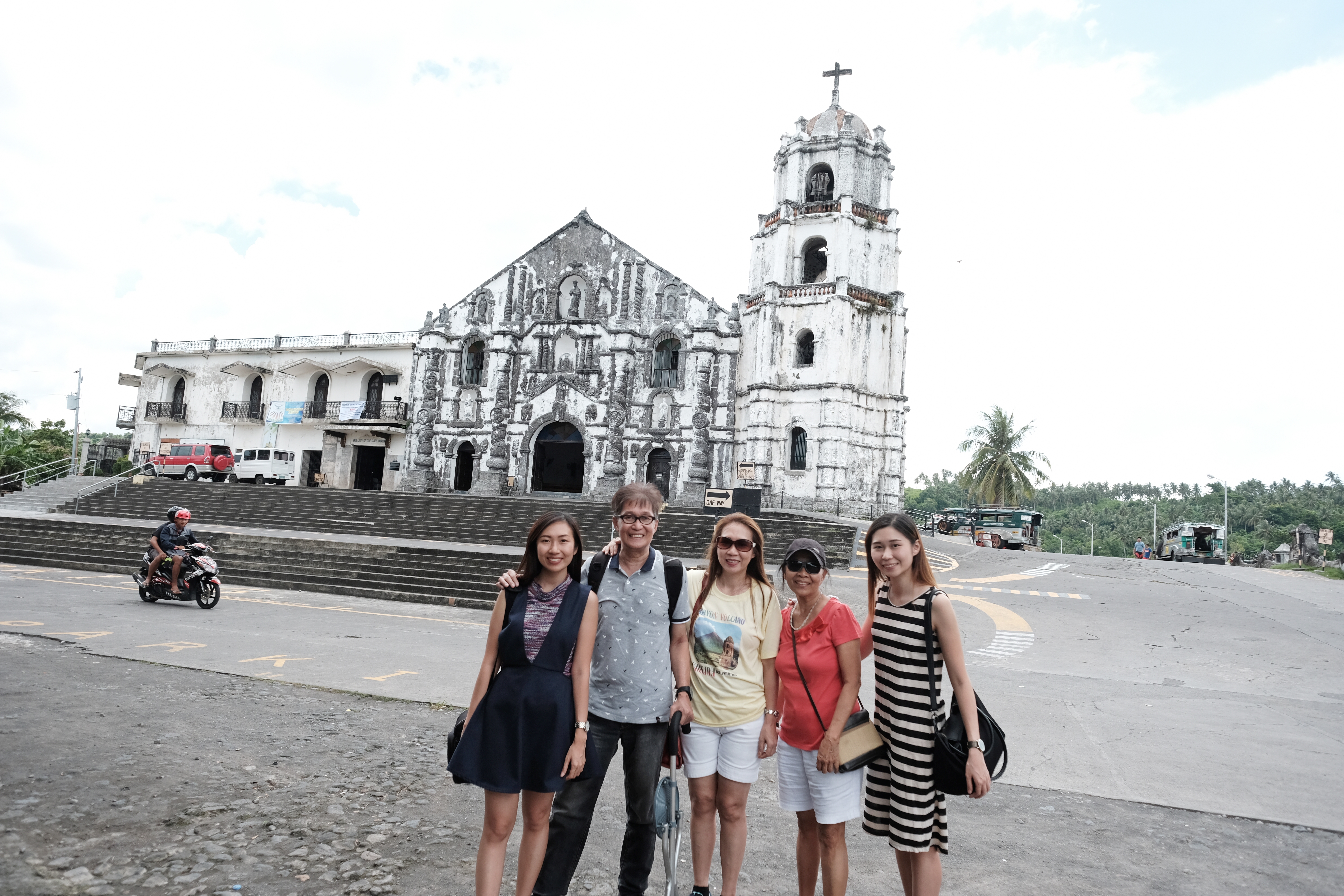
There’s a writing on the stone wall stating that devotees of Cagsawa Church moved here when the Mayon Volcano erupted in 1814 affecting Cagsawa. This architectural gem also served as the Japanese station and was severely damaged during World War II in 1945. It was reconstructed in 1971 to 1973 by Filipinos using an indigenous baroque style that distinguishes it from other colonial churches in the Philippines.
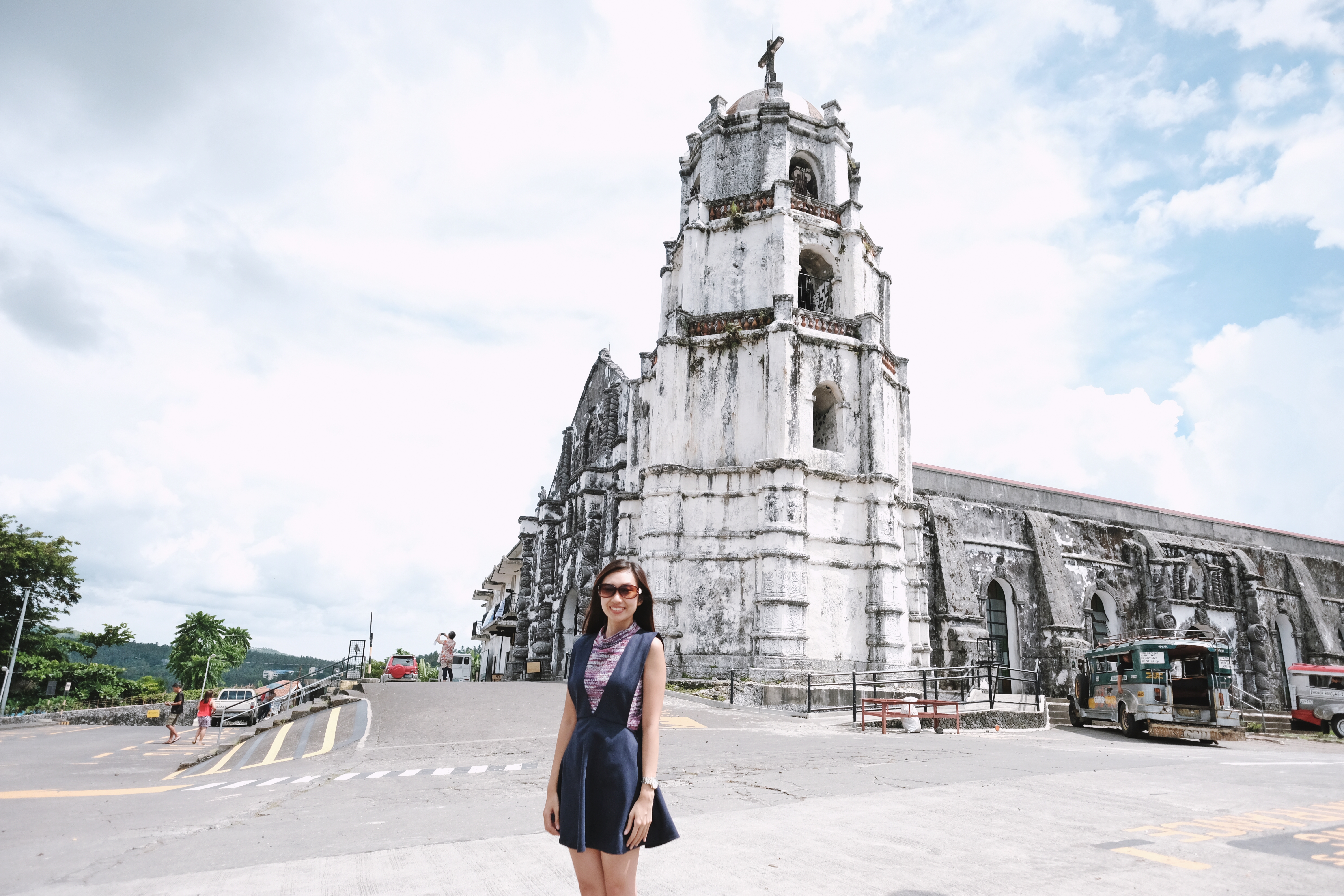
The facade was carefully carved from volcanic stones. Its distinct features include four spiral columns with medallions at the center of each column bearing images of the four Evangelists. In 2007, Daraga Church was declared as a National Historical Site. The church underwent restoration work in 2009-2010 to preserve its facade which is deteriorating because of age.
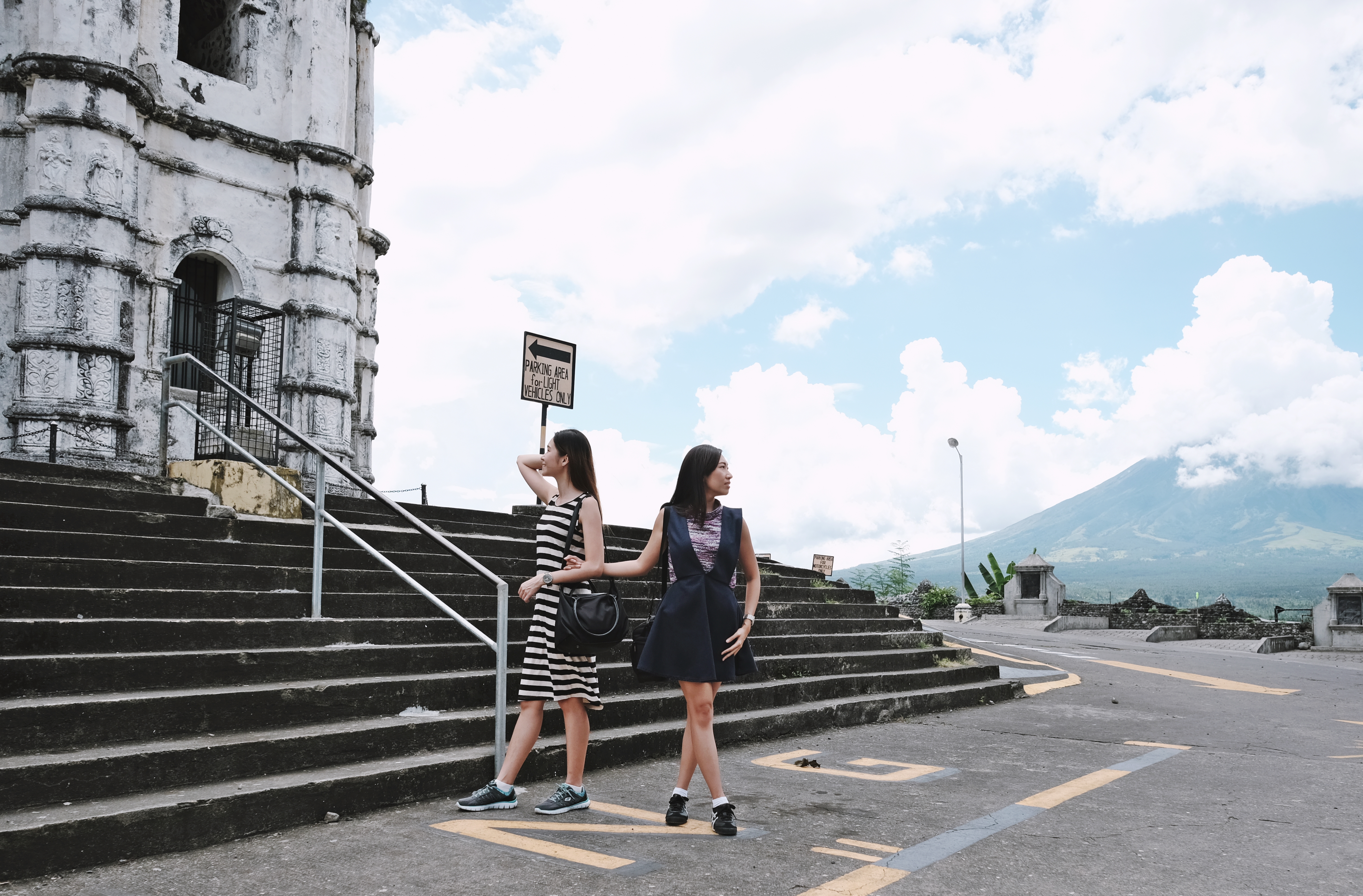
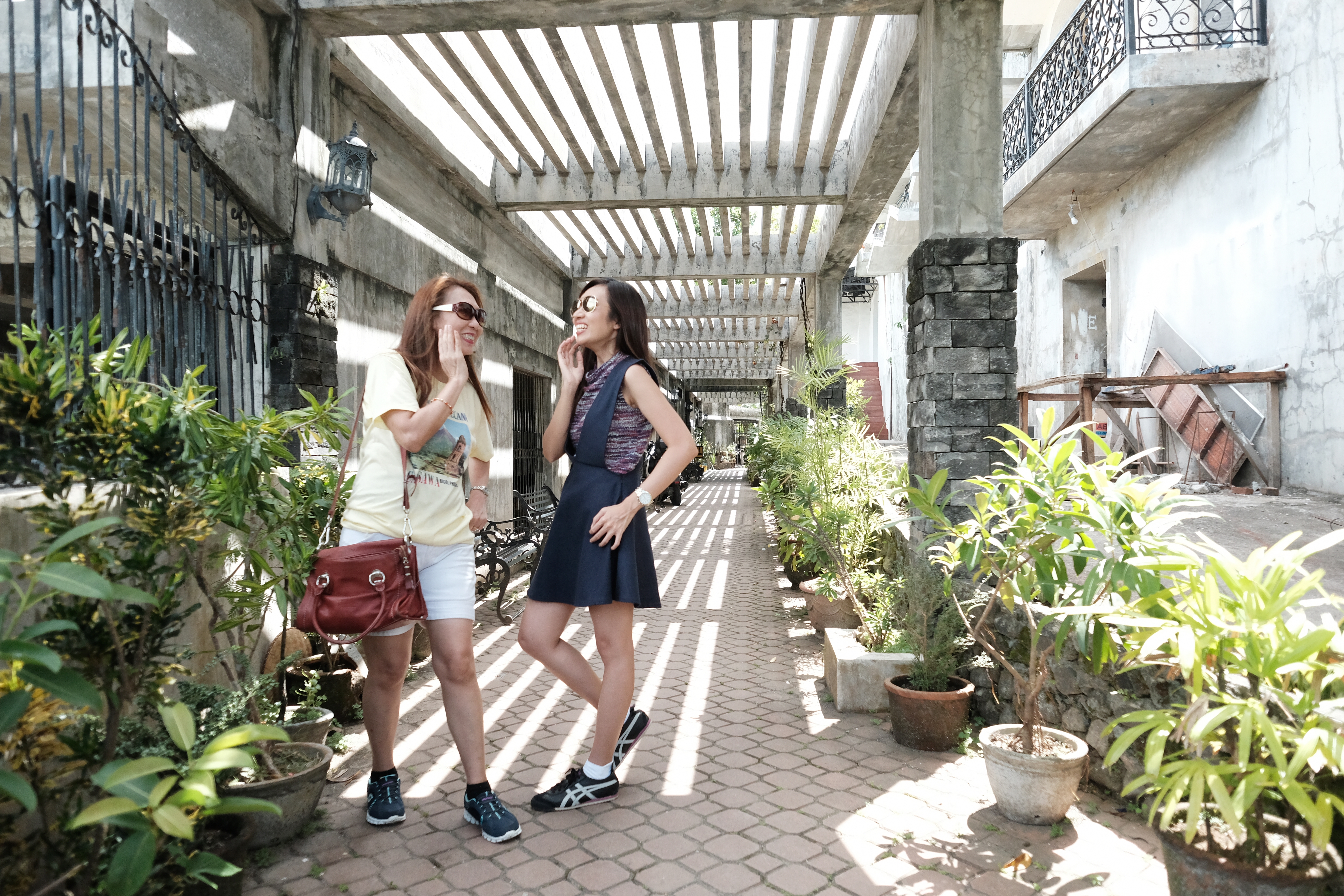
8. Pacific Mall (Gaisano Mall Legazpi)
My sister loves going to the mall every time she finds herself in a rural setting. 🙂 The city girl smiled to her heart’s content as we walked to the mall entrance. When in opened in 2001, Pacific Mall used to be Legazpi’s most prestigious but then its status has declined through the years, as more malls such as Ayala Malls and Robinson’s have been developed in the city.
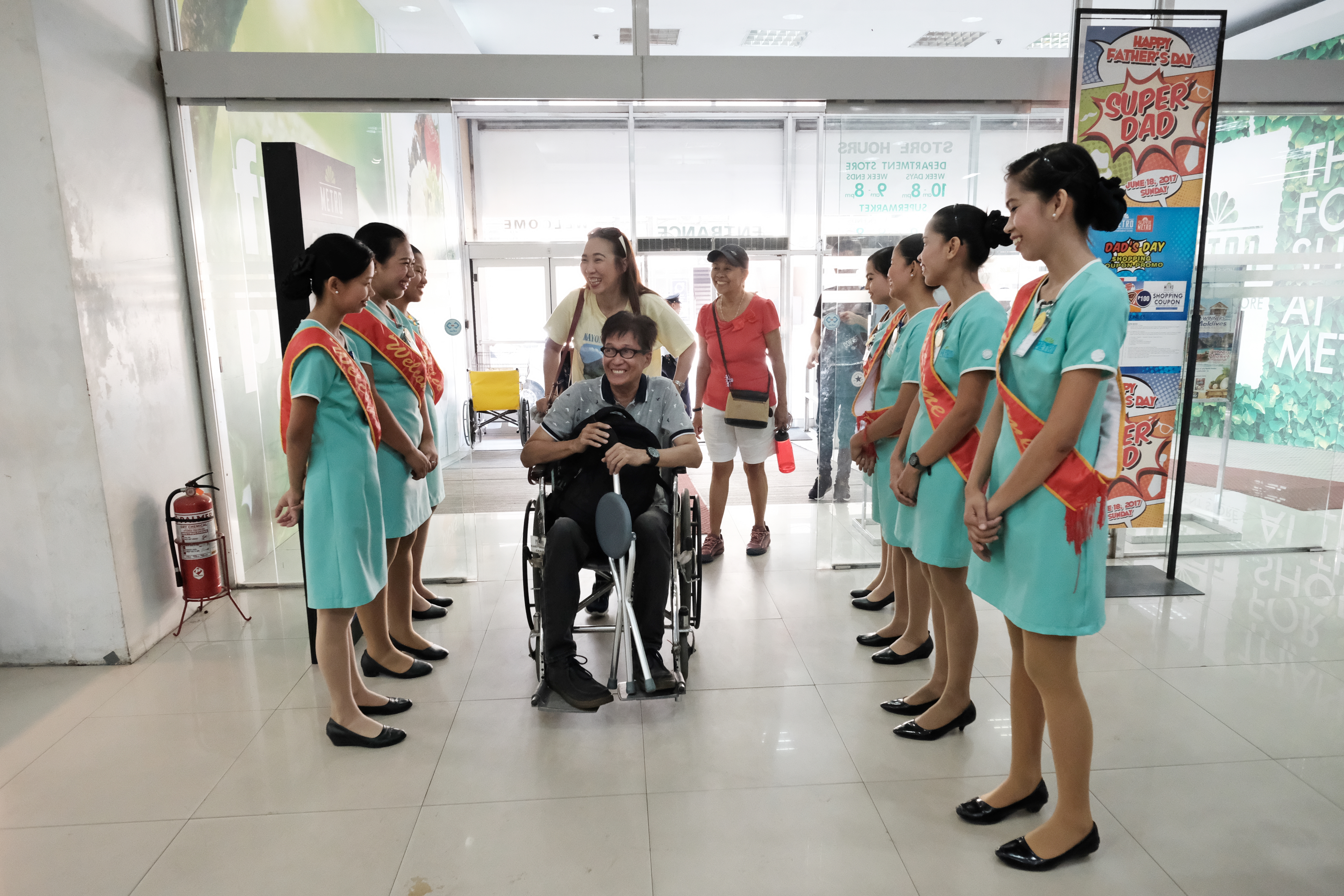
Nonetheless, Pacific Mall is a good place to go. It has a supermarket and department store and offers a selection of national and local retail shops, restaurants, boutiques, salons, cinemas, food court, and amusement center. What we didn’t like is the dim lighting and the outdated atmosphere, which made us feel somehow that we were transported to the past.
9. Ayala Malls Legazpi
Ayala Malls Legazpi boasts of a four-storey high atrium that was designed for shoppers to enjoy natural lighting and ventilation, adore Ayala Malls’ signature events, and admire the city’s majestic views of Mayon Volcano. We had dinner at Graceland and didn’t have more time to go around, but easily we can conclude that Ayala Malls looked and felt far more modern than Pacific Mall. It showcases the best of local, homegrown concepts and affordable fashion and foreign labels. In partnership with LCC, it aims to be the region’s mall of choice by providing a unique shopping, dining and entertainment experience to the Bicolanos.
10. Souvenir Shops at the Legazpi Terminal
We could not leave Legazpi without bringing home souvenirs or pasalubong for our friends. The Legazpi Terminal is about five minutes of walking distance away from Pacific Mall. Various keepsakes in jars like pili, laing, Bicol express, and chili paste and Bicol souvenir items like keychains, bags, shirts, hats, scarfs, refrigerator magnets, wallets, and house decors are being sold. We bought almost all items from a store named Bedez Benz Souvenir and Pili Candies.
Wrap Up
In 3D2N, we discovered the beauty of Legazpi and Ligao in Albay, which includes not only the famous tourist spots but also its genuinely humble and inspiring people who helped us with our travel itinerary. The locals showed hospitality and friendliness that are hallmarks of their culture. We’re so grateful for their kindness. Without them, we seriously could have wasted more time finding out where to go, where to eat, and where to shop!
We’re happy to have traveled in Albay in Bicol region as a family. Witnessing nature’s grandeur abounds in an adventure destination in the Philippines and exposing ourselves into a melting pot of Bicolano culture was both fun and enlightening rolled into one.
[schema type=”review” name=”10 Tourist Spots We Visited in Albay (Bicol Region)” description=”In this post, I’m sharing the 10 best tourist spots we visited in Albay (Bicol Region). All photos were taken using Fujifilm XT2 with 14mm lens.” author=”Rochkirstin Santos-Sioco” pubdate=”2017-06-17″ user_review=”5″ min_review=”0″ max_review=”5″ ]

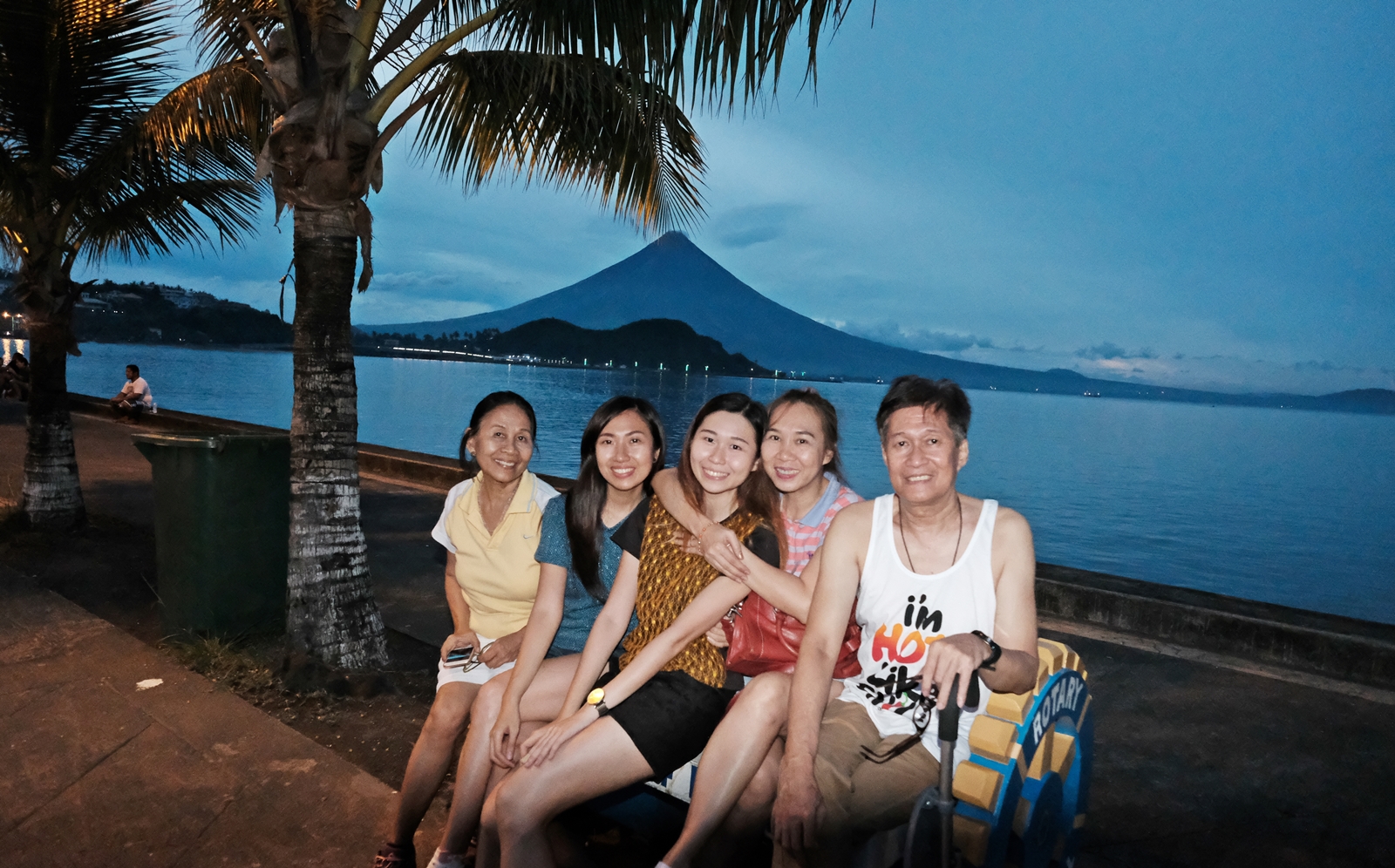
Leave a Reply to Robyn Petrik Cancel reply